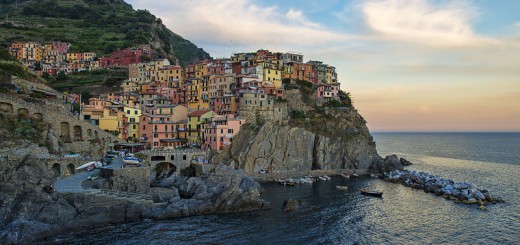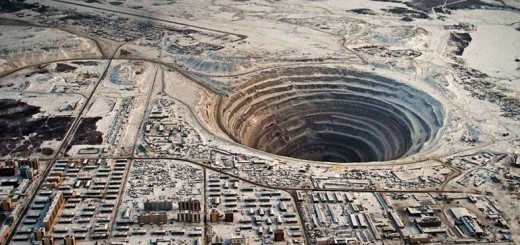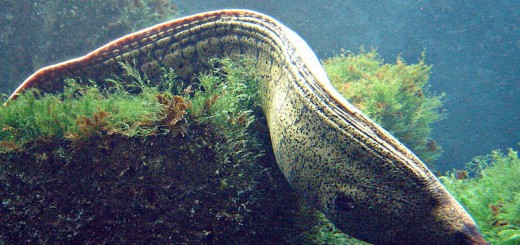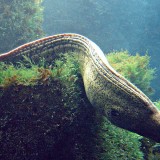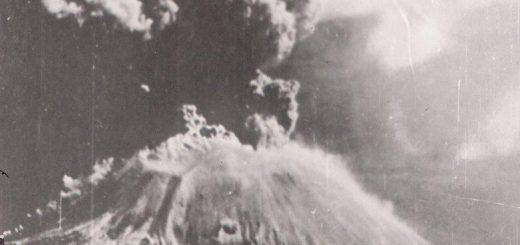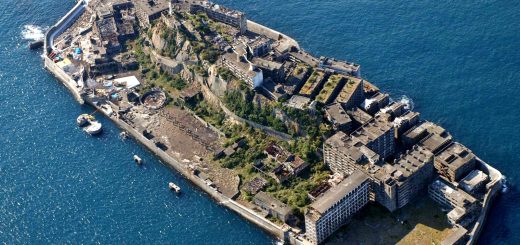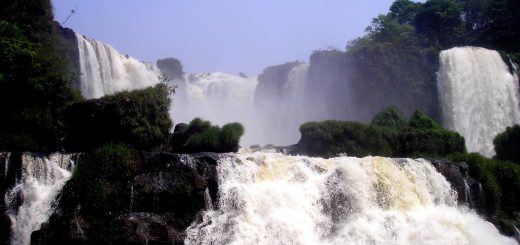Top 10 Unexplained Mysterious Places on the Earth
1. Bermuda Triangle – Devil’s Triangle

The Bermuda Triangle, also known as the Devil’s Triangle, is a loosely defined region in the western part of the North Atlantic Ocean, where a number of aircraft and ships are said to have disappeared under mysterious circumstances.
2. Rio Tinto, Spain
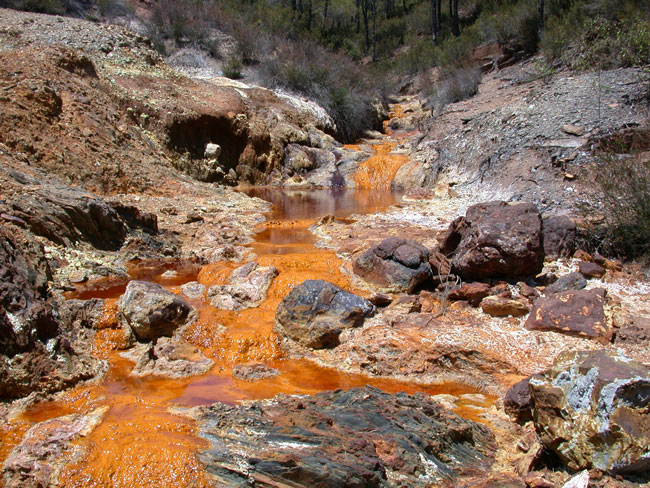
Rio Tinto is one of the most mysterious places on earth. Situated in the southwestern region of the country, this river is fed by red and highly acidic waters. The river owes its rusty appearance to the numerous minerals, including iron, which can be found within its depths. The acidity, on the other hand, still puzzles the scientists who are studying Rio Tinto today.
3. Magnetic Hill, Moncton, New Brunswick

The Magnetic Hill is an example of a gravity hill, a type of optical illusion created by rising and descending terrain. It is located at the North-Western edge (In the Magnetic Hill Area) of the city of Moncton in the Canadian province of New Brunswick.The general area is at the base of a ridge named “Lutes Mountain”, which rises several hundred feet above the surrounding Petitcodiac River valley.
4. Longyearbyen, Norway
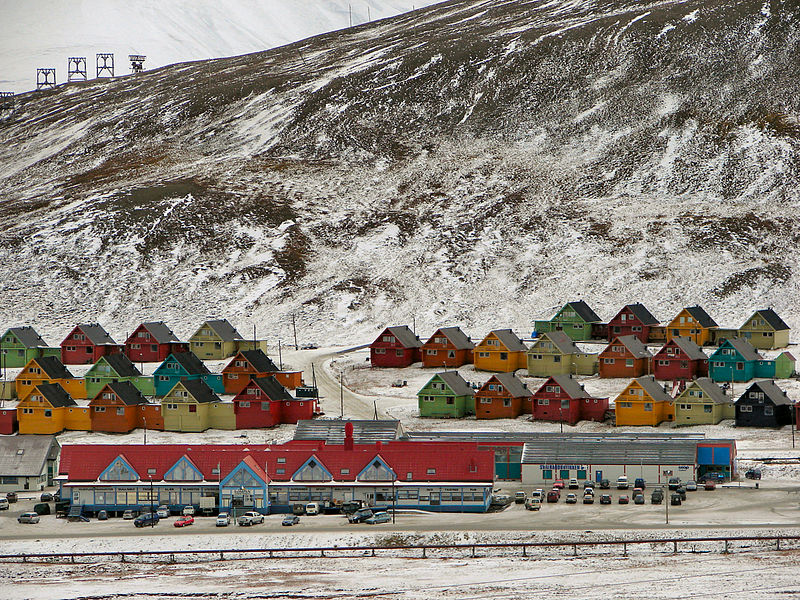
Longyearbyen is the largest settlement and the administrative center of Svalbard, Norway.Longyearbyen experiences midnight sun from 19 April through 23 August, polar night from 27 October through 14 February and civil polar night from 14 November through 29 January. However, due to shading from mountains, the sun is not visible in Longyearbyen until around 8 March.
5. Racetrack Playa, Death Valley, California
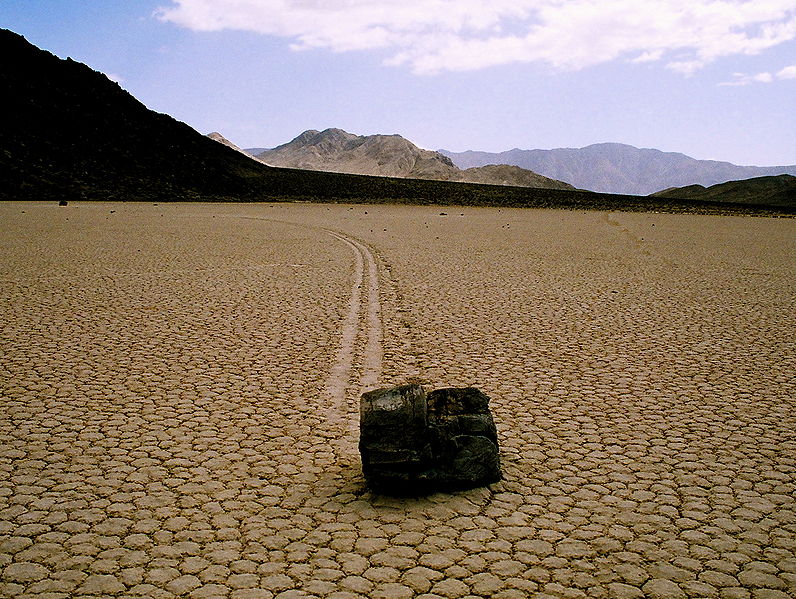
The Racetrack Playa, or The Racetrack, is a scenic dry lake feature with “sailing stones” that inscribe linear “racetrack” imprints. It is located above the northwestern side of Death Valley, in Death Valley National Park, Inyo County, California, U.S.
6. Eternal Flame Falls, Orchard Park, New York
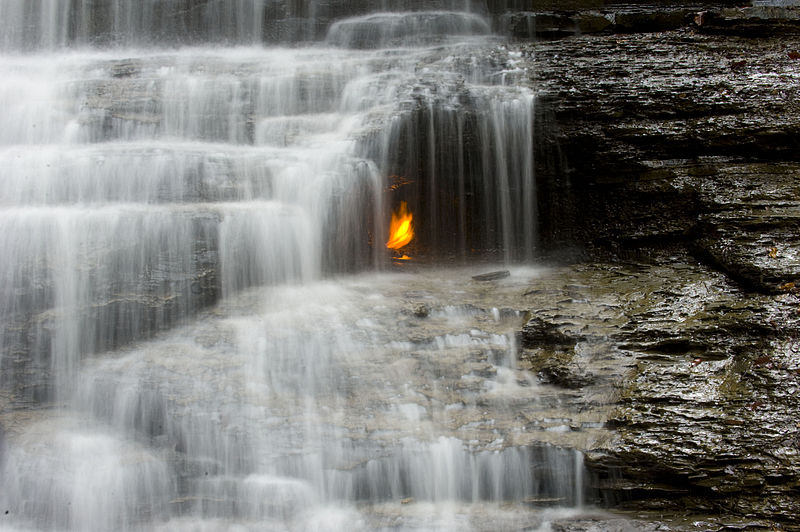
The Eternal Flame Falls is a small waterfall located in the Shale Creek Preserve, a section of the Chestnut Ridge Park in New York. A small grotto at the waterfall’s base emits natural gas, which can be lit to produce a small flame. This flame is visible nearly year round. It was featured in the book Secret Places by Bruce Kershner.
7. Stonehenge

Stonehenge is a prehistoric monument located in Wiltshire, England, about 2 miles (3 km) west of Amesbury and 8 miles (13 km) north of Salisbury. One of the most famous sites in the world, Stonehenge is the remains of a ring of standing stones set within earthworks. It is in the middle of the most dense complex of Neolithic and Bronze Age monuments in England, including several hundred burial mounds
8. Plain of Jars
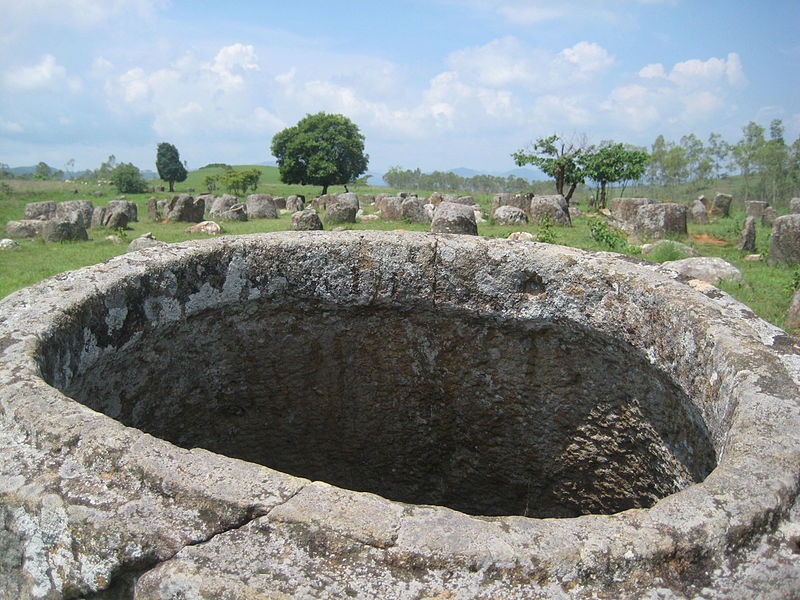
The Plain of Jars is a megalithic archaeological landscape in Laos. Scattered in the landscape of the Xieng Khouang plateau, Xieng Khouang, Lao PDR, are thousands of megalithic jars. These stone jars appear in clusters, ranging from a single or a few to several hundred jars at lower foothills surrounding the central plain and upland valleys.
The Xieng Khouang Plateau is located at the northern end of the Annamese Cordillera, the principal mountain range of Indochina. Initial research of the Plain of Jars in the early 1930s claimed that the stone jars are associated with prehistoric burial practices. Excavation by Lao and Japanese archaeologists in the intervening years has supported this interpretation with the discovery of human remains, burial goods and ceramics around the stone jars. The Plain of Jars is dated to the Iron Age (500 BC to AD 500) and is one of the most important sites for studying Southeast Asian prehistory.
9. Easter Island
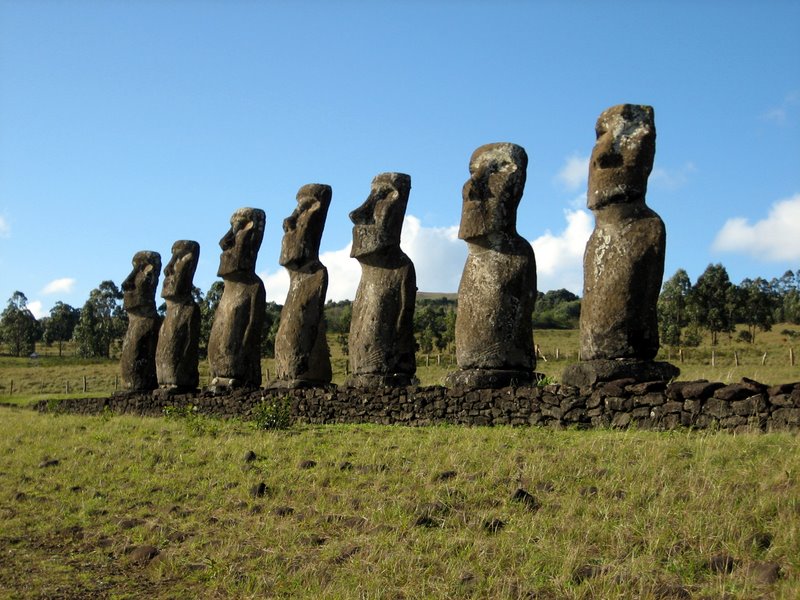
Easter Island is a Polynesian island in the southeastern Pacific Ocean, at the south easternmost point of the Polynesian Triangle. Easter Island is famous for its 887 extant monumental statues, called moai, created by the early Rapa Nui people. In 1995, UNESCO named Easter Island a World Heritage Site, with much of the island protected within Rapa Nui National Park. Polynesian people settled on Easter Island in the first millennium CE, and created a thriving culture, as evidenced by the moai and other artifacts. However, human activity, the introduction of the Polynesian rat and overpopulation led to gradual deforestation and extinction of natural resources, which caused the demise of the Rapa Nui civilization.
10. Moeraki Boulders, New Zealand
The Moeraki Boulders are unusually large and spherical boulders lying along a stretch of Koekohe Beach on the wave-cut Otago coast of New Zealand between Moeraki and Hampden. They occur scattered either as isolated or clusters of boulders within a stretch of beach where they have been protected in a scientific reserve. The erosion by wave action of mudstone, comprising local bedrock and landslides, frequently exposes embedded isolated boulders. These boulders are grey-colored septarian concretions, which have been exhumed from the mudstone enclosing them and concentrated on the beach by coastal erosion.

